The genomic and molecular landscape of splenic marginal zone lymphoma, biological and clinical implications
Splenic marginal zone lymphoma (SMZL) is a rare, predominantly indolent B-cell lymphoma constituting fewer than 2% of lymphoid neoplasms. However, around 30% of patients have
[...] Read more.
Splenic marginal zone lymphoma (SMZL) is a rare, predominantly indolent B-cell lymphoma constituting fewer than 2% of lymphoid neoplasms. However, around 30% of patients have a shorter survival despite currently available treatments and the prognosis is especially poor for the 5–15% of cases that transform to a large cell lymphoma. Mounting evidence suggests that the molecular pathogenesis of SMZL is critically shaped by microenvironmental triggering and cell-intrinsic aberrations. Immunogenetic investigations have revealed biases in the immunoglobulin gene repertoire, indicating a role of antigen selection. Furthermore, cytogenetic studies have identified recurrent chromosomal abnormalities such as deletion of the long arm of chromosome 7, though specific disease-associated genes remain elusive. Our knowledge of SMZL’s mutational landscape, based on a limited number of cases, has identified recurring mutations in KLF2, NOTCH2, and TP53, as well as genes clustering within vital B-cell differentiation pathways. These mutations can be clustered within patient subgroups with different patterns of chromosomal lesions, immunogenetic features, transcriptional signatures, immune microenvironments, and clinical outcomes. Regarding SMZL epigenetics, initial DNA methylation profiling has unveiled epigenetically distinct patient subgroups, including one characterized by elevated expression of Polycomb repressor complex 2 (PRC2) components. Furthermore, it has also demonstrated that patients with evidence of high historical cell division, inferred from methylation data, exhibit inferior treatment-free survival. This review provides an overview of our current understanding of SMZL’s molecular basis and its implications for patient outcomes. Additionally, it addresses existing knowledge gaps, proposes future research directions, and discusses how a comprehensive molecular understanding of the disease will lead to improved management and treatment choices for patients.
Amatta Mirandari ... Jonathan C. Strefford
View:1220
Download:37
Times Cited: 0
Splenic marginal zone lymphoma (SMZL) is a rare, predominantly indolent B-cell lymphoma constituting fewer than 2% of lymphoid neoplasms. However, around 30% of patients have a shorter survival despite currently available treatments and the prognosis is especially poor for the 5–15% of cases that transform to a large cell lymphoma. Mounting evidence suggests that the molecular pathogenesis of SMZL is critically shaped by microenvironmental triggering and cell-intrinsic aberrations. Immunogenetic investigations have revealed biases in the immunoglobulin gene repertoire, indicating a role of antigen selection. Furthermore, cytogenetic studies have identified recurrent chromosomal abnormalities such as deletion of the long arm of chromosome 7, though specific disease-associated genes remain elusive. Our knowledge of SMZL’s mutational landscape, based on a limited number of cases, has identified recurring mutations in KLF2, NOTCH2, and TP53, as well as genes clustering within vital B-cell differentiation pathways. These mutations can be clustered within patient subgroups with different patterns of chromosomal lesions, immunogenetic features, transcriptional signatures, immune microenvironments, and clinical outcomes. Regarding SMZL epigenetics, initial DNA methylation profiling has unveiled epigenetically distinct patient subgroups, including one characterized by elevated expression of Polycomb repressor complex 2 (PRC2) components. Furthermore, it has also demonstrated that patients with evidence of high historical cell division, inferred from methylation data, exhibit inferior treatment-free survival. This review provides an overview of our current understanding of SMZL’s molecular basis and its implications for patient outcomes. Additionally, it addresses existing knowledge gaps, proposes future research directions, and discusses how a comprehensive molecular understanding of the disease will lead to improved management and treatment choices for patients.
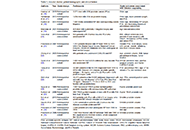 Risk factors for Gleason score upgrade from prostate biopsy to radical prostatectomyOpen AccessReviewAccurate identification of prostate cancer Gleason grade group remains an important component of the initial management of clinically localized disease. However, Gleason score upgrading (GSU) from b [...] Read more.Shayan Smani ... Michael S. LeapmanPublished: July 30, 2024 Explor Target Antitumor Ther. 2024;5:981–996
Risk factors for Gleason score upgrade from prostate biopsy to radical prostatectomyOpen AccessReviewAccurate identification of prostate cancer Gleason grade group remains an important component of the initial management of clinically localized disease. However, Gleason score upgrading (GSU) from b [...] Read more.Shayan Smani ... Michael S. LeapmanPublished: July 30, 2024 Explor Target Antitumor Ther. 2024;5:981–996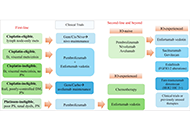 The rapidly changing treatment landscape of first-line advanced urothelial cancer (aUC) or metastatic urothelial cancer (mUC)Open AccessCommentaryThe landscape of treatment for first-line therapy in advanced urothelial cancer (aUC) and metastatic urothelial cancer (mUC) has rapidly changed in the last year alone. Maintenance avelumab remains [...] Read more.Minira Aslanova ... Jeanny B. Aragon-ChingPublished: July 29, 2024 Explor Target Antitumor Ther. 2024;5:971–980
The rapidly changing treatment landscape of first-line advanced urothelial cancer (aUC) or metastatic urothelial cancer (mUC)Open AccessCommentaryThe landscape of treatment for first-line therapy in advanced urothelial cancer (aUC) and metastatic urothelial cancer (mUC) has rapidly changed in the last year alone. Maintenance avelumab remains [...] Read more.Minira Aslanova ... Jeanny B. Aragon-ChingPublished: July 29, 2024 Explor Target Antitumor Ther. 2024;5:971–980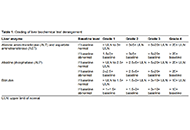 Hepatobiliary complications of immune checkpoint inhibitors in cancerOpen AccessReviewImmune checkpoint inhibitors (ICIs) have dramatically changed the landscape of cancer therapy. Over the last decade, both their primary focus in trials and clinical application have exponentially ri [...] Read more.Donna Zhuang ... Stephen RiordanPublished: July 26, 2024 Explor Target Antitumor Ther. 2024;5:955–970
Hepatobiliary complications of immune checkpoint inhibitors in cancerOpen AccessReviewImmune checkpoint inhibitors (ICIs) have dramatically changed the landscape of cancer therapy. Over the last decade, both their primary focus in trials and clinical application have exponentially ri [...] Read more.Donna Zhuang ... Stephen RiordanPublished: July 26, 2024 Explor Target Antitumor Ther. 2024;5:955–970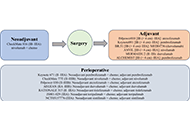 A narrative review on perioperative systemic therapy in non-small cell lung cancerOpen AccessReviewNon-small cell lung cancer (NSCLC) that is operable still carries a high risk of recurrence, approaching 50% of all operable cases despite adding adjuvant chemotherapy. However, the utilization of i [...] Read more.Robert Hsu ... David J. BenjaminPublished: July 26, 2024 Explor Target Antitumor Ther. 2024;5:931–954
A narrative review on perioperative systemic therapy in non-small cell lung cancerOpen AccessReviewNon-small cell lung cancer (NSCLC) that is operable still carries a high risk of recurrence, approaching 50% of all operable cases despite adding adjuvant chemotherapy. However, the utilization of i [...] Read more.Robert Hsu ... David J. BenjaminPublished: July 26, 2024 Explor Target Antitumor Ther. 2024;5:931–954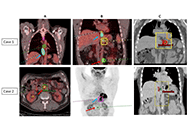 Oligometastatic esophageal cancer cured by systemic therapy combined with radiotherapy to primary tumor and metastasis (metastasis-directed therapy)—small case seriesOpen AccessCase ReportThe prognosis of metastatic esophageal cancer (EC) remains poor with an average life expectancy of around 9–12 months with standard systemic chemotherapy. The concept of oligometastatic disease (O [...] Read more.Mohan Hingorani, Hannah StubleyPublished: July 26, 2024 Explor Target Antitumor Ther. 2024;5:921–930
Oligometastatic esophageal cancer cured by systemic therapy combined with radiotherapy to primary tumor and metastasis (metastasis-directed therapy)—small case seriesOpen AccessCase ReportThe prognosis of metastatic esophageal cancer (EC) remains poor with an average life expectancy of around 9–12 months with standard systemic chemotherapy. The concept of oligometastatic disease (O [...] Read more.Mohan Hingorani, Hannah StubleyPublished: July 26, 2024 Explor Target Antitumor Ther. 2024;5:921–930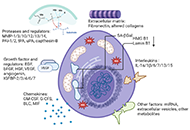 Therapy-induced senescence in breast cancer: an overviewOpen AccessReviewOutcomes for women with breast cancer have improved dramatically in recent decades. However, many patients present with intrinsic drug resistance and others are initially sensitive to anti-cancer dr [...] Read more.Suraj Narayanan Chembukavu, Andrew J LindsayPublished: July 25, 2024 Explor Target Antitumor Ther. 2024;5:902–920
Therapy-induced senescence in breast cancer: an overviewOpen AccessReviewOutcomes for women with breast cancer have improved dramatically in recent decades. However, many patients present with intrinsic drug resistance and others are initially sensitive to anti-cancer dr [...] Read more.Suraj Narayanan Chembukavu, Andrew J LindsayPublished: July 25, 2024 Explor Target Antitumor Ther. 2024;5:902–920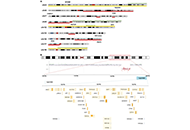 The genomic and molecular landscape of splenic marginal zone lymphoma, biological and clinical implicationsOpen AccessReviewSplenic marginal zone lymphoma (SMZL) is a rare, predominantly indolent B-cell lymphoma constituting fewer than 2% of lymphoid neoplasms. However, around 30% of patients have [...] Read more.Amatta Mirandari ... Jonathan C. StreffordPublished: July 23, 2024 Explor Target Antitumor Ther. 2024;5:877–901
The genomic and molecular landscape of splenic marginal zone lymphoma, biological and clinical implicationsOpen AccessReviewSplenic marginal zone lymphoma (SMZL) is a rare, predominantly indolent B-cell lymphoma constituting fewer than 2% of lymphoid neoplasms. However, around 30% of patients have [...] Read more.Amatta Mirandari ... Jonathan C. StreffordPublished: July 23, 2024 Explor Target Antitumor Ther. 2024;5:877–901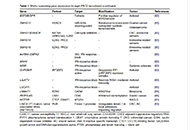 Regulatory RNAs: role as scaffolds assembling protein complexes and their epigenetic deregulationOpen AccessReviewOver the last decade, immune checkpoint inhibitors (ICIs) have dramatically improved the systemic treatment of multiple solid tumour types. However, they can also induce inflammation in an extensive [...] Read more.Palmiro PoltronieriPublished: July 22, 2024 Explor Target Antitumor Ther. 2024;5:841–876
Regulatory RNAs: role as scaffolds assembling protein complexes and their epigenetic deregulationOpen AccessReviewOver the last decade, immune checkpoint inhibitors (ICIs) have dramatically improved the systemic treatment of multiple solid tumour types. However, they can also induce inflammation in an extensive [...] Read more.Palmiro PoltronieriPublished: July 22, 2024 Explor Target Antitumor Ther. 2024;5:841–876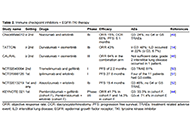 It might be a dead end: immune checkpoint inhibitor therapy in EGFR-mutated NSCLCOpen AccessReviewDespite innovative advances in molecular targeted therapy, treatment strategies using immune checkpoint inhibitors (ICIs) for epidermal growth factor receptor (EGFR)-mutant non-small cell lung cancer [...] Read more.Ken Akao ... Kazuyoshi ImaizumiPublished: July 19, 2024 Explor Target Antitumor Ther. 2024;5:826–840
It might be a dead end: immune checkpoint inhibitor therapy in EGFR-mutated NSCLCOpen AccessReviewDespite innovative advances in molecular targeted therapy, treatment strategies using immune checkpoint inhibitors (ICIs) for epidermal growth factor receptor (EGFR)-mutant non-small cell lung cancer [...] Read more.Ken Akao ... Kazuyoshi ImaizumiPublished: July 19, 2024 Explor Target Antitumor Ther. 2024;5:826–840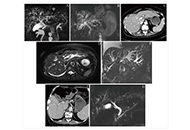 Immune checkpoint inhibitor-induced cholangitis—a three-case seriesOpen AccessCase ReportOver the last decade, immune checkpoint inhibitors (ICIs) have dramatically improved the systemic treatment of multiple solid tumour types. However, they can also induce inflammation in an extensive range of normal tissues types. [...] Read more.Simon Gray ... Anna Olsson-BrownPublished: July 19, 2024 Explor Target Antitumor Ther. 2024;5:818–825
Immune checkpoint inhibitor-induced cholangitis—a three-case seriesOpen AccessCase ReportOver the last decade, immune checkpoint inhibitors (ICIs) have dramatically improved the systemic treatment of multiple solid tumour types. However, they can also induce inflammation in an extensive range of normal tissues types. [...] Read more.Simon Gray ... Anna Olsson-BrownPublished: July 19, 2024 Explor Target Antitumor Ther. 2024;5:818–825